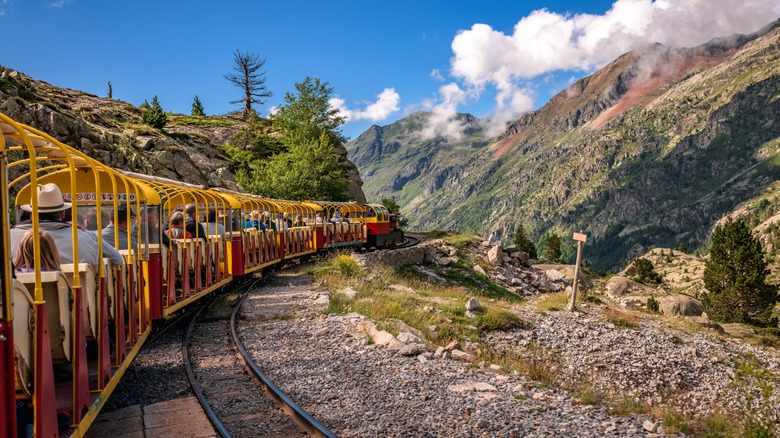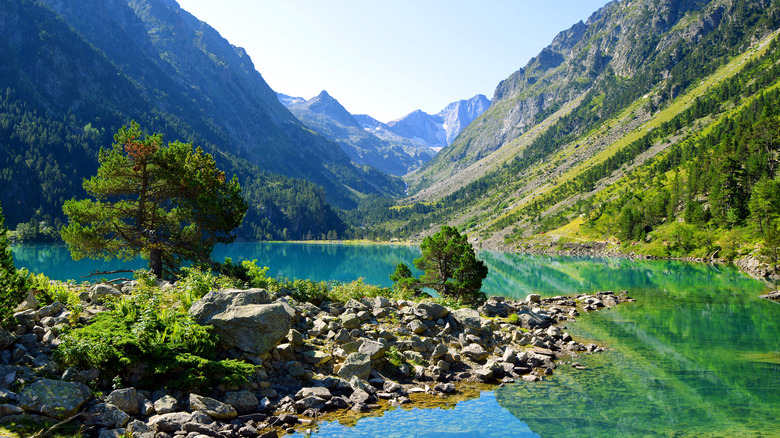Europe's Most Harrowing Train Ride Is An Awe-Inspiring Route Through The Clouds Of France
Clattering 5,600-feet high, the tracks of France's precipitous Petit train d'Artouste wrap around the scenic and historic southerly Pyrenees. The narrow-gauge tourist railway is one of the highest in Europe, a nail-biting passage where jagged cliff edges trundle under the wide windows. It's a small locomotive, with only 6 carriages seating 12 passengers each, running every 30 minutes from 9 a.m. to 5 p.m in high summer season, and hourly from 10 a.m. to 3 p.m. during the low season. Adult tickets will run you €27 per person, or $29.50 USD, while children aged 4 to 12 are charged €19, and kids under four ride for free. Brush up on your most helpful French phrases and get a ticket on arrival, or book in advance online.
Reaching the train starting point requires a scenic cable car glide from Lac de Fabrèges, and it fortunately only takes 10 minutes to reach the departure station. Before heading up, take some time to enjoy the calm blue waters of this stunning, large alpine lake located 37 miles south of Pau, a small southern French city two hours from Toulouse's international airport. It's best to travel by rail from Toulouse or another major city by using Rick Steve's tips for cheap train travel in France.
Take to the rails for the best views of the French Pyrenees
Snaking straight into the midst of mountain mists, the sharp turns and cliff-edge tracks of the Train d'Artouste can seem daunting. Yet, travelers who brave the vertiginous railroad are rewarded with sweeping views of France's remote southern mountains. The tracks pass over the vast, verdant Le Vallon du Soussouéou, where wild rhododendrons add dashes of pink to the green valley and rocky crag. They trail past thick pines and crashing waterfalls, inhabited only by marmots poking their heads from thick grasses. Eventually, the train takes passengers past the tranquil turquoise waters of Lac d'Artouste and to unspoiled viewpoints over one of France's most biodiverse regions. More than 3,000 plant species can be found up amid the Pyrenees crags, and some types of animals, including swooping vultures, elusive brown bears, and goat-antelopes.
Medieval farmers used these precipitous passes to chivvy herds of cattle, goats, sheep, and horses to more fertile pastures high in the mountains. Once you have a glance down at the steep ledges, it's hard to imagine the feat of moving upwards with an entire flock. The train itself was originally not designed as a tourist attraction, rather a mode of transport for the scientists studying glaciers and the long-concealed, glacier-formed Lac d'Artouste. Once they headed skywards to investigate, the potential for a scenic train route became unmissable.

